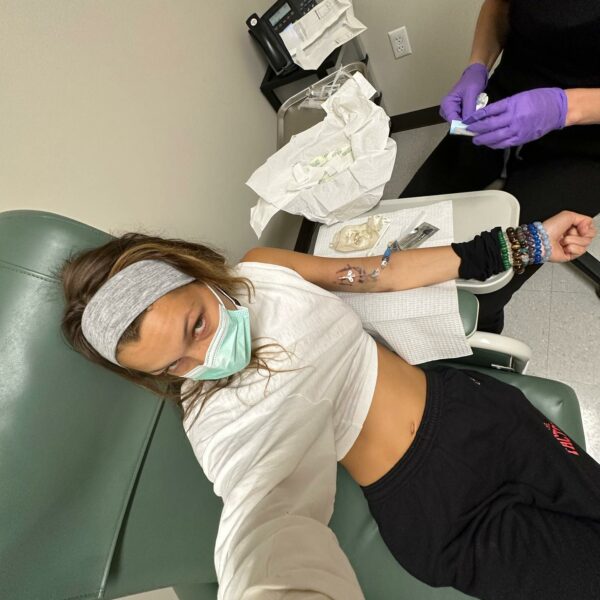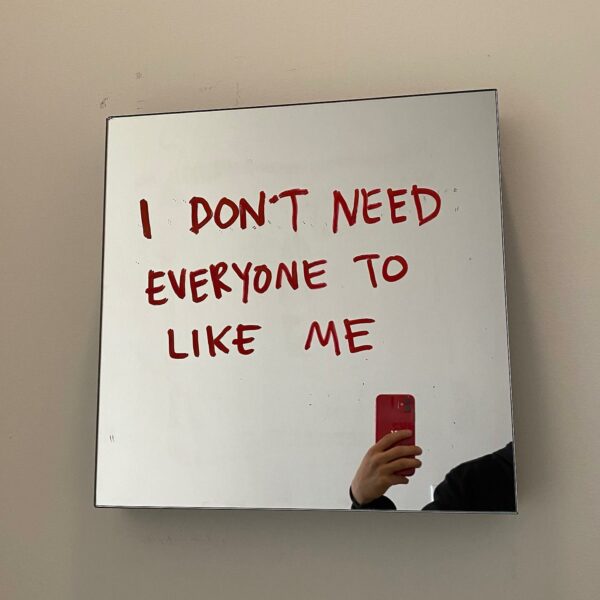Ralph Nichols said, “The most basic of all human needs is the need to understand and be understood.” It is a universal need to feel heard and seen. So, for all our interpersonal relationships to thrive, we must make a conscious effort to ensure those around us feel heard and seen, too. Doing so will not only strengthen our ability to communicate with those we love, but it will empower the people in our lives (including our children) to be their best selves.
Here are eight simple ways to make people feel heard, seen, and understood.
1. Be Fully Present
Have you ever been out for dinner with a friend, and halfway through a conversation, they pick up their phone to check their messages? Or you’ve noticed they keep looking over your shoulder to see who else might walk through the door? Have they been there with you, but also just not really there with you at all? It doesn’t feel good, does it? It can leave us feeling dismissed, unappreciated, and disrespected even if that wasn’t the intention.
When you are with someone, make a conscious effort to give them your undivided attention. Being fully present with someone is, I think, one of the greatest gifts you can offer another person.
2. Active Listening
Active listening means paying attention to what someone is saying without mentally planning your response before they have finished talking. It helps us refrain from making assumptions about what they might say or what we think they are trying to say, and instead enables us to hear what they are actually telling us.
3. Reflective Listening
Reflective listening allows the other person to really know that they are being heard. After listening to what they have to say, you can use simple phrases such as “I hear what you are saying” or “I can see how that must have made you feel.” You may also paraphrase what they have said back to them to demonstrate that you have taken the time to understand and fully grasp what they have expressed to you.
4. Hold Space for Them
One of the reasons why sitting in a therapist’s room can feel so comforting, and even liberating, is simply because they hold space for us to open up and to be completely and utterly ourselves. Make effort to create and hold that space for those close to you: let them know that you are there for them, whenever they need, without the expectation of anything in return.
5. Offer Complete Non-Judgment
When somebody comes to you, learn to listen without any need to judge or criticize. Even if you disagree with someone’s actions or ideas, try first to understand their perspective and to offer compassion, kindness, and non-judgment.
6. Validate Their Feelings
We all have an emotional experience that is individual to us. There is no “right” or “wrong” way to feel. To make another person feel heard and understood, we must be considerate when validating whatever emotion they are trying to express. The first step of emotional validation is to simply acknowledge the feeling/emotion by using phrases such as, “I understand why that would have made you feel that way.”
7. Listen Without Trying to “Fix”
For many of us, our instinct is to “fix” or “solve” problems. But when people come to us, they most often just want space to express themselves freely. Try to practice listening without the need to offer a solution, unless you are asked for one!
8. Remind Them How Much They Mean to You
What better way to make someone feel heard, seen, understood than to simply tell them how much you value them and to tell them that you love them for everything that they are.
Roxie Nafousi is a self-development coach, manifesting expert, yoga teacher, and host of the podcast “The Moments That Made Me.” Head to her website to book a spot in her next self-development webinar, schedule a one-on-one advice session, or download one of her meditations or affirmation playlists designed to help you on your manifestation journeys. Follow her on Instagram.
The content provided in this article is provided for information purposes only and is not a substitute for professional advice and consultation, including professional medical advice and consultation; it is provided with the understanding that Poosh, LLC (“Poosh”) is not engaged in the provision or rendering of medical advice or services. The opinions and content included in the article are the views of the author only, and Poosh does not endorse or recommend any such content or information, or any product or service mentioned in the article. You understand and agree that Poosh shall not be liable for any claim, loss, or damage arising out of the use of, or reliance upon any content or information in the article.






































